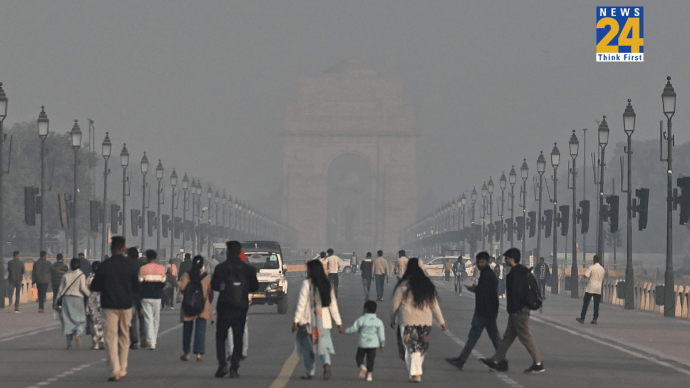New Delhi: The Indian Space Research Organisation (ISRO) on Friday informed that Chandrayaan-3 spacecraft has covered nearly two-thirds of the distance to the moon.
Chandrayaan-3 Mission:
The spacecraft has covered about two-thirds of the distance to the moon.---Advertisement---Lunar Orbit Injection (LOI) set for Aug 5, 2023, around 19:00 Hrs. IST. pic.twitter.com/MhIOE65w3V
— ISRO (@isro) August 4, 2023
---Advertisement---
Taking the matter to Twitter, ISRO wrote, “The spacecraft has covered about two-thirds of the distance to the moon. Lunar Orbit Injection (LOI) set for Aug 5, 2023, around 19:00 Hrs. IST.”
Chandrayaan-3, India’s third lunar exploration mission, is set to mark a significant milestone in the country’s space endeavors by making India the fourth nation, following the US, China, and Russia, to achieve a successful spacecraft landing on the moon’s surface.
Launched onboard LVM-3 on July 14, 2023, at 14:35 IST, Chandrayaan-3 is currently undergoing a series of orbit maneuvers with the ultimate objective of reaching the moon’s orbit. The journey to the moon’s orbit is expected to take approximately 33 days from the launch date.
Read more: Modi surname defamation case: Supreme Court grants reprieve to Rahul Gandhi; Victory Dance at Congress Headquarters
Upon its successful landing, the spacecraft is designed to operate for one lunar day, equivalent to approximately 14 Earth days. This relatively short timeframe poses a unique challenge for conducting scientific experiments and collecting valuable data during the mission.
Chandrayaan-3 is equipped with a wide array of electronic and mechanical subsystems, specially designed to ensure a safe and soft landing. These include navigation sensors, propulsion systems, guidance and control mechanisms, and other crucial onboard electronics. Additionally, the mission features mechanisms for the release of a rover, two-way communication-related antennas, and various scientific instruments.
The primary objectives of the Chandrayaan-3 mission revolve around achieving a safe and soft landing on the moon’s surface, conducting rover exploration, and performing in-situ scientific experiments. These objectives aim to enhance our understanding of the lunar environment and pave the way for future space exploration missions.
The development phase of Chandrayaan-3 commenced in January 2020, with an initial plan to launch sometime in 2021. However, due to the unforeseen challenges posed by the Covid-19 pandemic, the mission experienced delays. The approved cost of Chandrayaan-3 is approximately Rs. 250 crores, excluding the launch vehicle cost.
The success of Chandrayaan-3 holds significant importance for India’s space agency, ISRO, as it serves as a follow-up attempt to the Chandrayaan-2 mission. Chandrayaan-2, though faced challenges during its soft landing on the lunar surface in 2019, contributed valuable scientific outcomes, including the first-ever global map for lunar sodium, insights into crater size distribution, and the detection of lunar surface water ice with the IIRS instrument.













